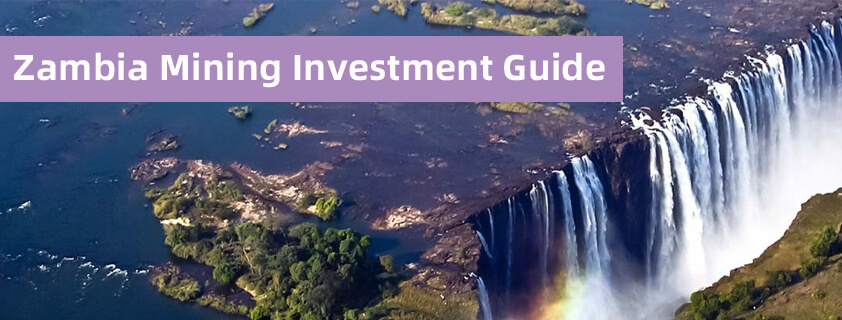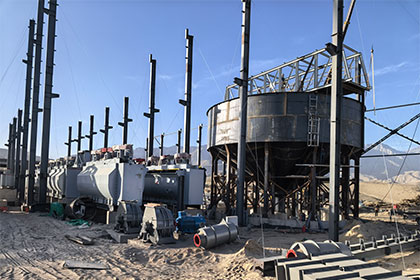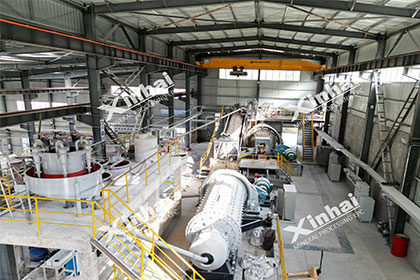2025 Zambia Mining Investment Guide
 Shirley
Shirley
 Nov 24, 2022
Nov 24, 2022
 2947
2947
If you want to know more details about equipment, solutions, etc, please click the button below for free consultation, or leave your requirements!

Zambia is located in south-central Africa and borders 8 countries. It borders Malawi and Mozambique in the east, Zimbabwe, Botswana and Namibia in the south, Angola in the west, and Tanzania and Congo (Kinshasa) in the north. Zambia has a tropical grassland climate, mild and cool, with an annual average temperature between 18-20°C.
The official language of Zambia is English. Zambia's constitution stipulates that Zambia is a Christian country, and other beliefs include Catholicism, Hinduism, Islam and primitive religions.
01Distribution of Mineral Resources
BackZambia is rich in mineral resources. Non-ferrous metal deposits include copper, cobalt, zinc, lead, nickel, platinum, manganese, tin, iron and gold.
Zambia is known as the "country of copper mines". It has proven copper reserves of 19 million tons, accounting for about 6% of the world's total copper reserves. Cobalt is an associated mineral of copper, with reserves of about 350,000 tons. In 2018, Zambia's cobalt output was 7,790 tons, making it the world's major cobalt-producing country.
Lead-zinc mines are mainly distributed in Kabwe. The total proven reserves of lead-zinc mines are about 4.96 million tons, and its grade contains 15% lead and 25% zinc. It is one of the regions with the most abundant lead-zinc grades and reserves in the world.
Iron ore reserves are relatively rich, with proven reserves of about 900 million tons, ore grade up to 50%, mainly distributed in the Central Province and the Western Province.
Non-metallic mineral resources include limestone, phosphate, potassium (sodium) feldspar, wollastonite, marble, granite and sodalite.
Zambia also has a variety of gemstones, including emeralds, amethysts, diamonds, malachite, garnets, tourmalines, and more. Among them, the output of emerald accounts for more than 20% of the world's total output, and it has high transparency and good quality.
02Mining Management and Policy
BackZambia's legal system is relatively sound. At the legal level, it encourages the private sector to actively invest in the construction of new large-scale mines, controls and restricts the production and development of small-scale mines, and prevents illegal mining.
Investment in the mining field, in addition to applying for an investment license, also needs to be approved by the competent national ministries and commissions of the relevant industry. In addition, the "Mines and Mineral Development Act" stipulates that all small-scale mining rights, small-scale gemstone mining rights and prospecting licenses are only issued to Zambians or companies owned by Zambians, but mining rights for industrial minerals are not subject to this restriction.
The law requires that an application be made to the head of the mining department before exploration can be undertaken. Article 12 of the Zambian law prohibits anyone from conducting any exploration activities without mining rights, mineral processing licenses and gold panning certificates.
In order to obtain a prospecting right, the applicant must apply to the mining cadastral supervisor for a prospecting license in the prescribed form after paying the prescribed fee. The Mining Licensing Committee of the Ministry of Mines grants an exploration license to the applicant in the prescribed format within 60 days of receipt of the application, provided that the application complies with the following provisions, the exploration license confers on the holder the exclusive right to be in the area To carry out prospecting for the minerals specified in the licence, and to perform all other acts and things which are necessary or incidental to the conduct of these operations.
Both foreign and local entities may have scouting, exploration and mining rights. However, exploration licenses, small-scale mining licenses, small-scale gemstone licenses and artisan mining rights cannot be granted to non-Zambian citizens or non-citizen-owned companies. A citizen-owned company is a company in which Zambian citizens own at least 50.1% of the equity and Zambian citizens have significant control over the management of the company. It is important to note that there are no restrictions on foreign businesses holding large mining licenses.
Any assignment or assignment of mining rights without the approval of the Minister of Mines through the Office of the Director is prohibited. It is also required that the Minister must be notified of any change in the mining license holder's controlling interest at least 30 days before the effective transfer date.
Section 67 further provides that holders of mining rights or mineral processing licenses may, without the prior written approval of the Minister, also register with the Minister or with the prior written approval of the Minister: transfer the company to any person or a nominee for that person, but to do so would give that person control over the company, or enter into an agreement with any person if doing so would give that person control over the company.
03Relevant Tax and Preferential Policies
BackUnder the Income Tax Act, the corporate income tax rate applicable to companies engaged in mining operations is 30%. Variable profits tax of up to 15% no longer applies However, there is a limit to limiting the loss deduction to 50% of taxable income. Withholding tax on dividends declared by companies engaged in mining operations at a rate of 0%.
Mineral royalties for mining rights holders shall be paid at the rate of 5% for base metals (except copper), energy and industrial minerals, and 6% for gemstones and precious metals. If the mineral is copper, the mineral holding royalty rate is: 4% when the copper price is below $4,500 per ton. 5% for copper above $4,500 per ton but below $6,000. 6% if the copper price exceeds $6,000 per ton.
04Investment Environment Analysis
BackPolitical aspects: Zambia is currently one of the African countries with a better investment and trade environment. Since the founding of the People's Republic of China, there have been no military conflicts with neighboring countries, the political situation has remained stable, and the society has been peaceful.
Economic aspects: In order to get rid of the past situation of relying solely on copper resources as the main economic industry, the government actively implemented economic diversification policies, encouraged the common development of agriculture, mining, manufacturing, tourism and other industries, and achieved positive results. For a long time, Zambia has implemented a free and market-oriented open economy, without trade import and export quotas, allowing investors to enter all economic fields, and implementing preferential policies in tax relief, labor permits, land transfers, foreign exchange freedom, etc. to vigorously attract foreign investment.
 +86 183 3575 8886
+86 183 3575 8886 pinklaurabao@gmail.com
pinklaurabao@gmail.com




 Message
Message Chat Now
Chat Now

















